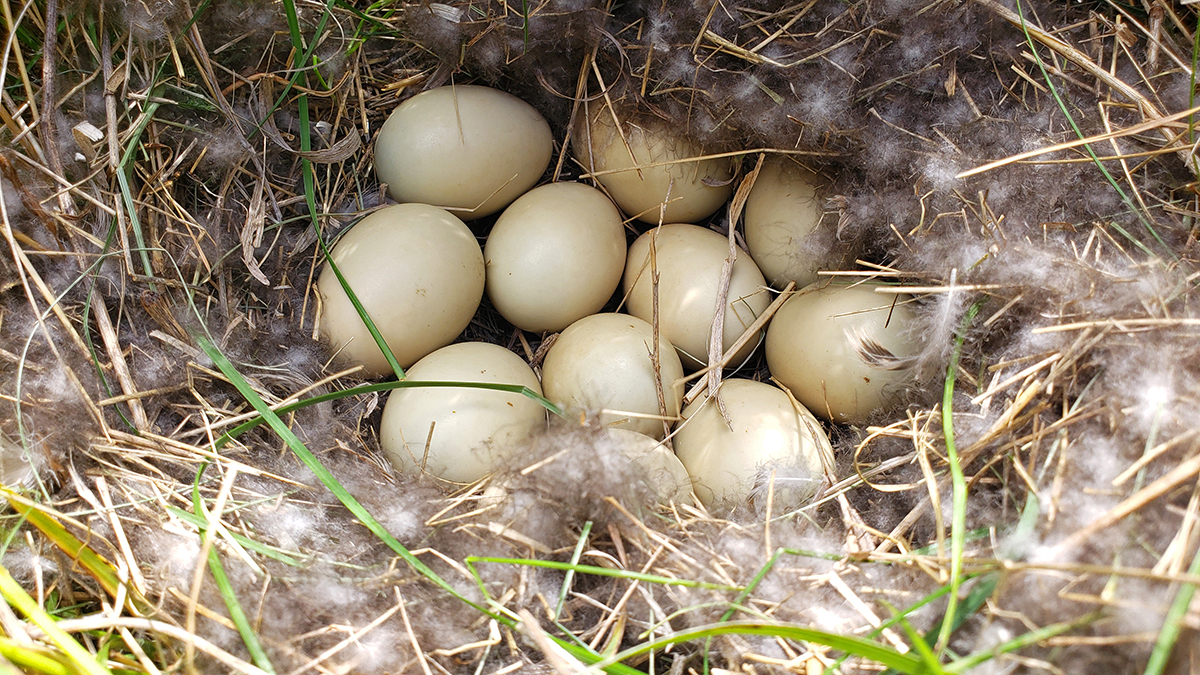Spring Survey Reveals Declining Waterfowl Numbers in North Dakota
State biologists count 500,000 fewer breeding ducks compared to 2023.
State biologists count 500,000 fewer breeding ducks compared to 2023.

BISMARCK, ND – June 14, 2024 – The North Dakota Game & Fish Department (NDGF) recently completed its 77th annual spring breeding duck survey, and numbers dipped slightly from 3.4 million birds in 2023 to 2.9 million this year, making the 2024 breeding duck population the 30th highest on record, and 17% above the agency's long-term average.
"By and large, all species were flat to down. Mallards, for instance, were down about 19%, pintails were down about 20% and blue-winged teal down roughly 13%," NDGF migratory game bird supervisor Mike Szymanski said. "These species being down from last year is one thing, but when you compare it back to what we consider to be one of our best periods for breeding ducks in North Dakota (1994-2016), we’re down a lot more than that. So overall, mallards, pintails, blue-winged teal, gadwall, wigeon and northern shovelers are down anywhere from 24 to 49% from that 1994 to 2016 time period."
Szymanski said the decline in breeding duck numbers is likely related to the loss of CRP and perennial grasses ducks use for nesting cover, and while wetlands were relatively dry coming out of winter, abundant spring rains helped put water on the landscape and the 2024 wetland count was the 32nd highest in the last 77 years. If steady precipitation patterns continue, nesting probabilities and renesting opportunities could improve. However, of equal importance is the continued conservation and protection of the state's grasslands and wetlands, which is the most important ingredient for waterfowl reproduction.
"There should be a pretty good nesting effort by ducks this year in what upland nesting habitat is available," Szymanski said. "Wetlands are in much better shape now and there should be a really good renesting effort for those birds that had nests destroyed by predators."
Despite the dip in numbers, Szymanski advises hunters not to overreact to the state's data before having a chance to review the more encompassing U.S. Fish and Wildlife Service's survey results in August.
"It can be really hard to predict what our fall hunting is going to be like from what we see in the May survey," Szymanski said. "But throughout summer, we'll have our July duck brood survey, and we'll have a fall wetland survey in September to kind of give last looks at what production was like in the state, and then also what wetland conditions are like leading into the hunting season."
NDGF waterfowl biologists have conducted surveys across North Dakota every spring since 1948 and cover hundreds of miles to observe both wetlands and ducks. The results offer the first glimpse of habitat conditions and breeding populations before the U.S. Fish and Wildlife Service releases its survey results later in the year.
"Although the decline in numbers of breeding waterfowl in North Dakota is concerning, it underscores the importance of Ducks Unlimited's work to improve, protect, and conserve habitat within the state," said Dr. Johann Walker, DU’s Director of Operations for the Great Plains Region. "We rely on Mother Nature to fill the wetlands and nourish our grasslands, but the table has to be set when the snow and rain comes. That's why DU will continue to work with partners, farmers and ranchers, landowners and volunteers to ensure North Dakota, and the entire Prairie Pothole Region, is home to the best waterfowl breeding habitat."
You can read more about the survey on the NDGF website or watch Mike Szymansk's update on DU's Great Plains Regional Facebook page.
For more information, visit www.ducks.org, and be sure to follow DU's Twitter feed—@DucksUnlimited and @DUConserve—to get the most up-to-date news from Ducks Unlimited.
Media Contact:
Ben Romans
(208) 761-7775
bromans@ducks.org
Ducks Unlimited uses cookies to enhance your browsing experience, optimize site functionality, analyze traffic, and deliver personalized advertising through third parties. By continuing to use this site, you agree to our use of cookies. View Privacy Policy